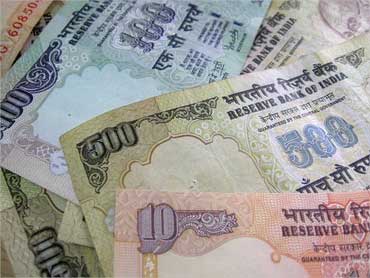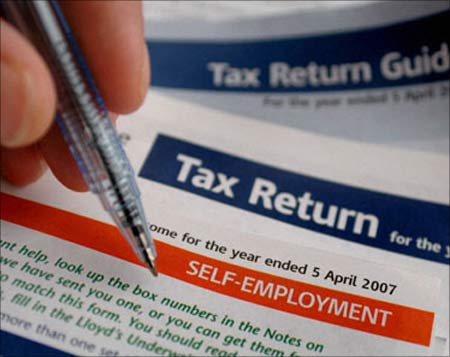 | « Back to article | Print this article |
How you can save tax by investing in mutual funds
Planning your taxes is an integral part of your financial planning.
Sec 80C of the Income Tax Act allows you to claim deductions from your taxable income by investing in certain investments.
One of the most popular Sec 80C investments is in tax saving mutual funds or Equity Linked Savings Scheme.
This is an equity diversified fund and investors enjoy both the benefits of capital appreciation, as well as tax benefits.
With the financial year coming to a close and sentiments towards equity markets turning positive, investments in ELSS are on the rise.
Let's understand more on Equity Linked Savings Schemes.
Click NEXT to read further. . .
How you can save tax by investing in mutual funds
What are the significant features of ELSS?
An ELSS is a diversified equity mutual fund which has a majority of the corpus invested in equities.
Since it is an equity fund, returns from an ELSS fund reflect returns from the equity markets.
This type of mutual fund has a lock in period of three years from the date of investment.
This means if you start a Systematic Investment Plan in an ELSS, then each of your investments will be locked in for three years from the respective investment date. Investors can exit ELSS by selling it after three years.
Similar to other equity funds, ELSS funds have both dividend and growth options.
Click NEXT to read further. . .
How you can save tax by investing in mutual funds
Investors get a lump sum on the expiry of three years in growth schemes.
On the other hand, in a dividend scheme, investors get a regular dividend income, whenever dividend is declared by the fund, even during the lock-in period.
For tax purposes, returns from an ELSS scheme are tax free.
You can claim upto Rs 100,000 of your ELSS investment as a deduction from your gross total income in a financial year under Sec 80C of the Income Tax Act.
Click NEXT to read further. . .
How you can save tax by investing in mutual funds
What should you look in an ELSS fund?
Remember to do thorough research when you invest in an ELSS fund.
You must look at the long term performance of the fund before putting your money in it.
Also remember to look at the fund details like the fund manager's investment approach, portfolio of the fund, the expense ratio of the fund and how volatile the fund has been in the past.
Click NEXT to read further. . .
How you can save tax by investing in mutual funds
Advantages of ELSS over other tax saving instruments
Compared to traditional tax saving instruments like Public Provident Fund, National Savings Certificate and bank fixed deposits; the lock in period of an ELSS fund is much lower.
While ELSS investment is locked in for three years, PPF investments are locked in for 15 years, NSC investments are locked in for 6 years, and bank fixed deposits eligible for tax deduction are locked in for 5 years.
As ELSS is an investment in equity markets and investing in this for a long term can give you better returns compared to other asset classes over the long term.
You can also opt for SIP investments, which bring about discipline in regular investing. You can also get income from your investment amount in the lock in period if you opt for dividend schemes.
Click NEXT to read further. . .
How you can save tax by investing in mutual funds
What are the disadvantages of an ELSS?
ELSS is not for risk averse investors.
As ELSS investments are per se stock market investments, all risks associated with equity investments pertain to ELSS.
So you are better off avoiding ELSS if you do not wish to take this risk.
Another disadvantage of ELSS is that you cannot withdraw your funds before the maturity date.
Other instruments like PPF and bank deposits permit premature withdrawal, subject to certain conditions.
Click NEXT to read further. . .
How you can save tax by investing in mutual funds
ELSS treatment after the introduction of Direct Tax Code
ELSS was excluded as a tax saving instrument as per the last draft of the DTC.
So your investment in ELSS will not get you a deduction from your income under Sec 66 (which is a replacement of Sec 80C under DTC).
But only the draft version of the DTC has been released.
So it remains to be seen if the mutual fund industry can get the Government to include ELSS as a tax saving instrument in the final version of the DTC.
Click NEXT to read further. . .
How you can save tax by investing in mutual funds
High inflows into ELSS funds are determined by the performance of the stock market in general.
Also, if an investor gets better tax-adjusted returns from other investment avenues like debt, he will prefer to go for this, as risk is lower.
But over a long term, ELSS funds are the best tax saving instruments; especially if you are an investor who can take on high risk.
The success of this category of mutual fund depends on the tax treatment it receives under the DTC.
Powered by
BankBazaar.com is an online marketplace where you can instantly get loan rate quotes, compare and apply online for your personal loan, home loan and credit card needs from India's leading banks and NBFCs.
Copyright 2025 www.BankBazaar.com. All rights reserved.







